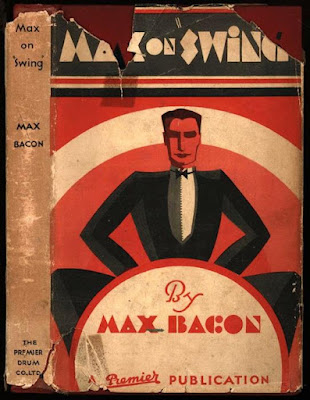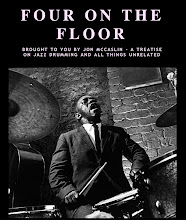A couple of new books arrived in my mailbox recently and today I'm going to share them with you all.
I think that one of the bright sides of the challenges of the past two years, over the course of the COVID-19 pandemic, is that many people had the motivation to invest their time and channel their positive energy into new projects and creative ventures.
Ireland's Conor Guilfoyle and Iowa's James Dreier are two accomplished drummer/authors who did just this and they have both recently self-published two wonderful new drum books that offer a wealth of information and challenging things to practice and think about.
Keeping the Drummer Occupied - by Conor Guilfoyle
I've known Conor for some time now and he is no stranger to writing interesting drum books and sharing his great exercises and compelling concepts via his YouTube channel.
The exercises that Conor has written are concise, practical and offer a variety of concepts and skills that will undoubtedly expand a drummer's vocabulary by using rudiments in creatively different ways.
Keeping the drummer occupied. These 40 studies provide an interesting and challenging way to practice your rudiments. Each study is designed to develop both rhythmic ability and hand technique by utilising familiar stickings in unique ways. Singles, doubles, flams, rolls, and paradiddles are all presented using a combination of unusual rhythmic groupings as well as odd time signature giving you an insight into many of the rhythmic devices found in the contemporary music of today. Also included is a challenging snare drum etude which can be used as a performance or audition piece.
https://conorguilfoyle.com/books
Standard Tune Learning Sequence: A Musical Approach to Improvisation for Jazz Drummers - by James Dreier
James Dreier's new book is a welcome addition to the canon of jazz drumming literature, in which he offers practical approaches to drum improvisation using song form and melody as guiding features.
I was first introduced to Dreier's concepts while researching for my own doctoral research and thesis Melodic Jazz Drumming https://tspace.library.utoronto.ca/handle/1807/69408
Dreier's step-by-step approach to using melody and form as reference points and organizing principles while soloing on the drums was an important influence in my own research.
While books that deal with specific patterns, coordination, technique, etc. are very important I also feel that books and approaches such as Dreier's are very important as well because they teach us to think about How and Why we play the drums, not just about What we are playing on the drums.
My book, Standard Tune Learning Sequence, A Musical Approach to Improvisation for Jazz Drummers, is a method book designed to provide jazz drummers with a sequential, organized set of exercises (the STLS sheet), utilizing the act of singing, to learn jazz standards and improvise over them. The book also contains a dozen unique improvisational strategies (along with tune lists, recommended resources etc.), to provide drummers directed and focused ways to utilize the musical elements of any jazz standard for improvisation. It is all designed to provide a more musical foundation for jazz drumming.
There is also a dedicated YouTube channel that provides instruction and examples for all the material provided in the book.The book is available on Amazon.
"This book is excellent way for even a beginning drummer to start incorporating song form into their daily practice routine in an organized and creative way."
- Joe LaBarbera





























